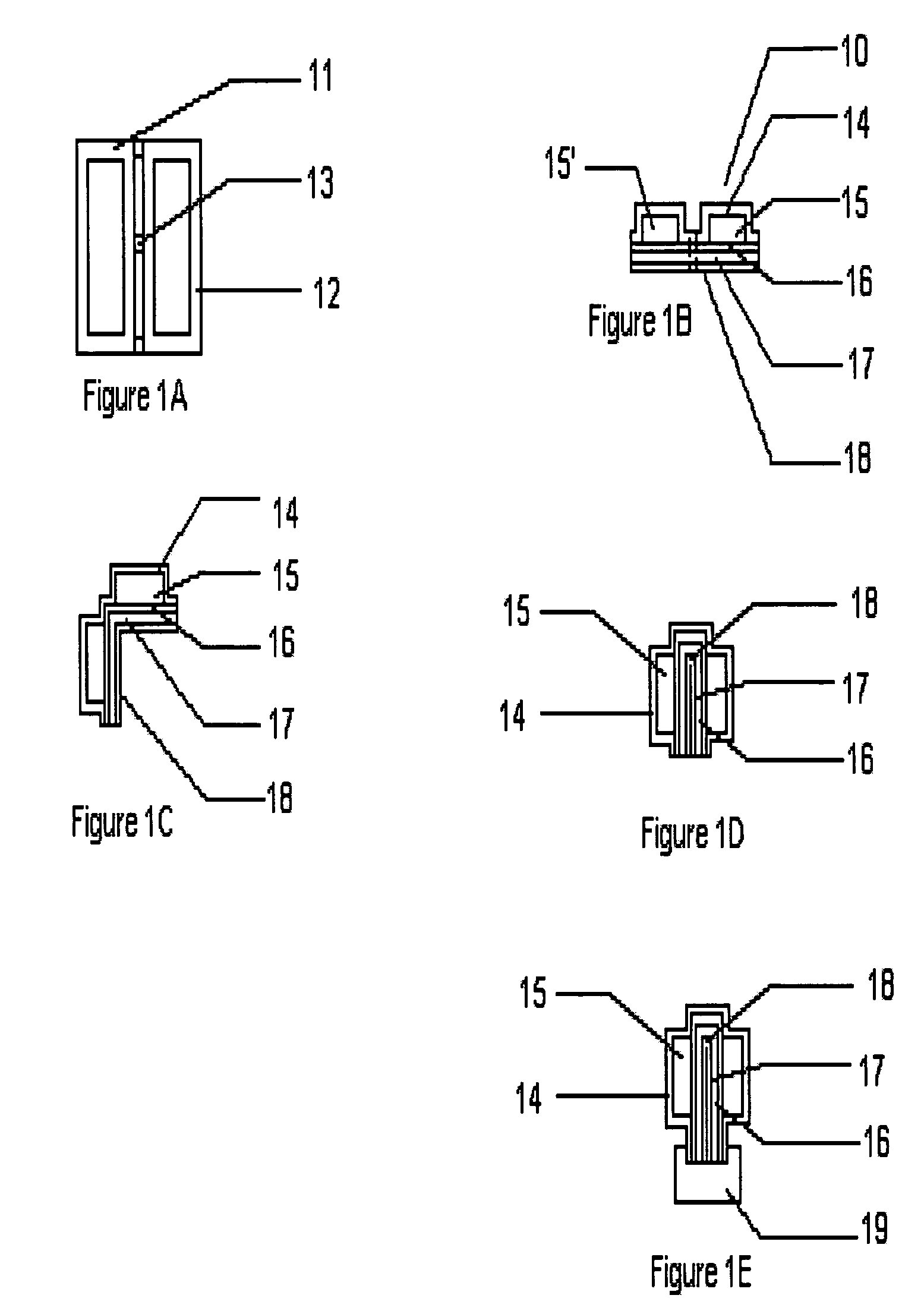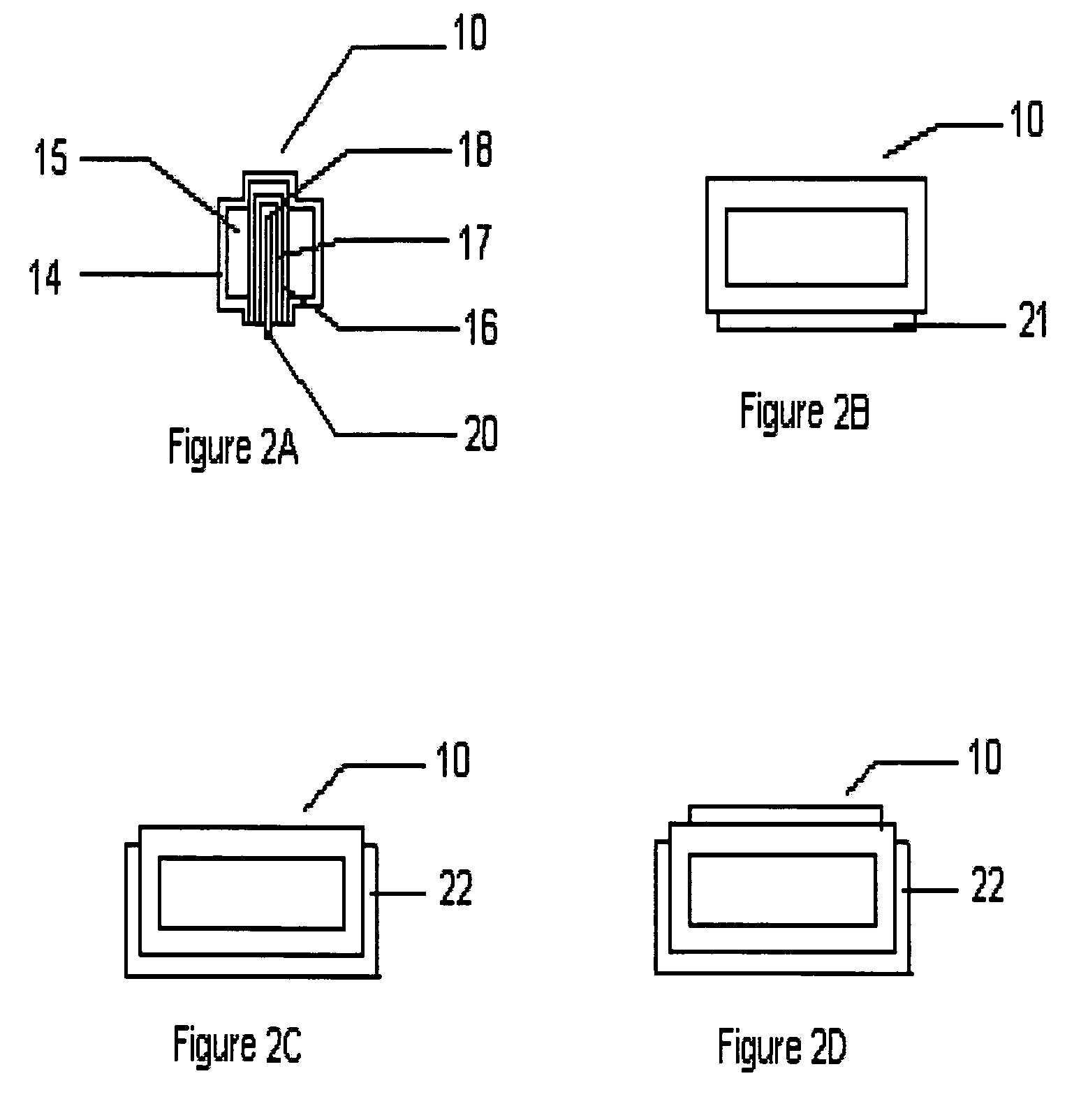Modular adsorbent filters
a filter and module technology, applied in the field of modules, can solve the problems of static friction or “stiction” of the contamination-related failure mechanism of the computer disk drive, the filter is incapable of fully addressing the growing need for even smaller and more compact filters, and may cause damage to external contaminates as well as out-gassing from internal components
- Summary
- Abstract
- Description
- Claims
- Application Information
AI Technical Summary
Benefits of technology
Problems solved by technology
Method used
Image
Examples
example 1
[0131]An adsorbent assembly was made having the following features. A polyester film or sheet having a thickness of 0.003 inches was coated with an adhesive on two sides. The adhesive was 0.0015 inch thick high temperature acrylic pressure sensitive adhesive. This double sided adhesive construction is available from Adhesives Research company in Glenn Rock Pa.
[0132]A 70 wt % activated carbon and 30 wt % PTFE adsorbent core was made by in accordance to U.S. Pat. No. 4,985,296:
[0133]The polymeric filter membrane was provided comprising expanded porous PTFE membrane having a 0.2 micron rating as made and supplied by W. L. Gore and Associates, Inc. Newark, Del.
[0134]Two adsorbent pieces were cut and placed on the adhesive coated polyester sheet equidistant from the location of the intended fold line. The porous polymeric membrane was pressed over the adsorbents and adhered to the adhesive on the polyester film around the perimeter of each adsorbent. A perforation was made along the fold...
PUM
| Property | Measurement | Unit |
|---|---|---|
| thickness | aaaaa | aaaaa |
| thickness | aaaaa | aaaaa |
| thickness | aaaaa | aaaaa |
Abstract
Description
Claims
Application Information
 Login to View More
Login to View More - R&D
- Intellectual Property
- Life Sciences
- Materials
- Tech Scout
- Unparalleled Data Quality
- Higher Quality Content
- 60% Fewer Hallucinations
Browse by: Latest US Patents, China's latest patents, Technical Efficacy Thesaurus, Application Domain, Technology Topic, Popular Technical Reports.
© 2025 PatSnap. All rights reserved.Legal|Privacy policy|Modern Slavery Act Transparency Statement|Sitemap|About US| Contact US: help@patsnap.com



